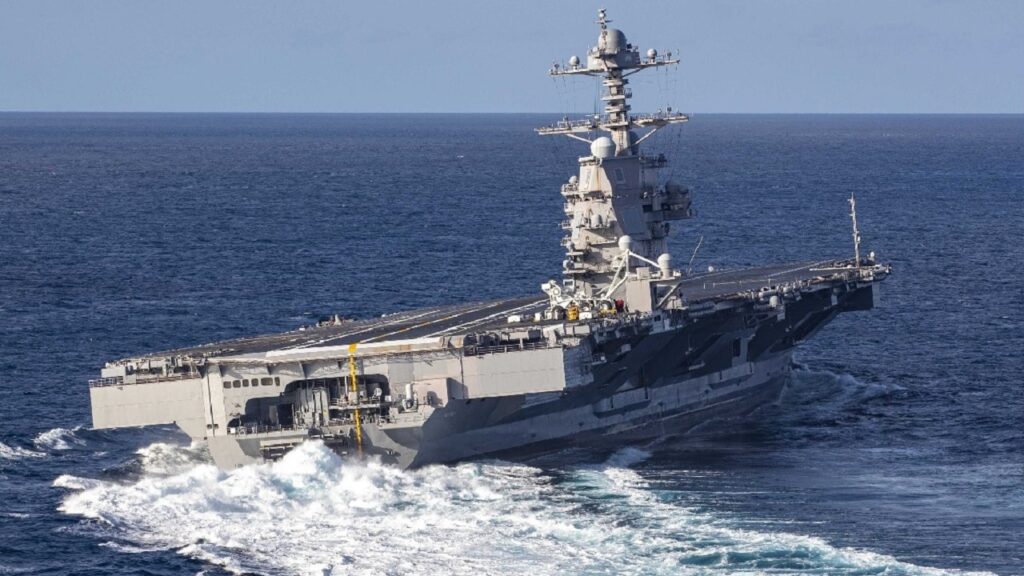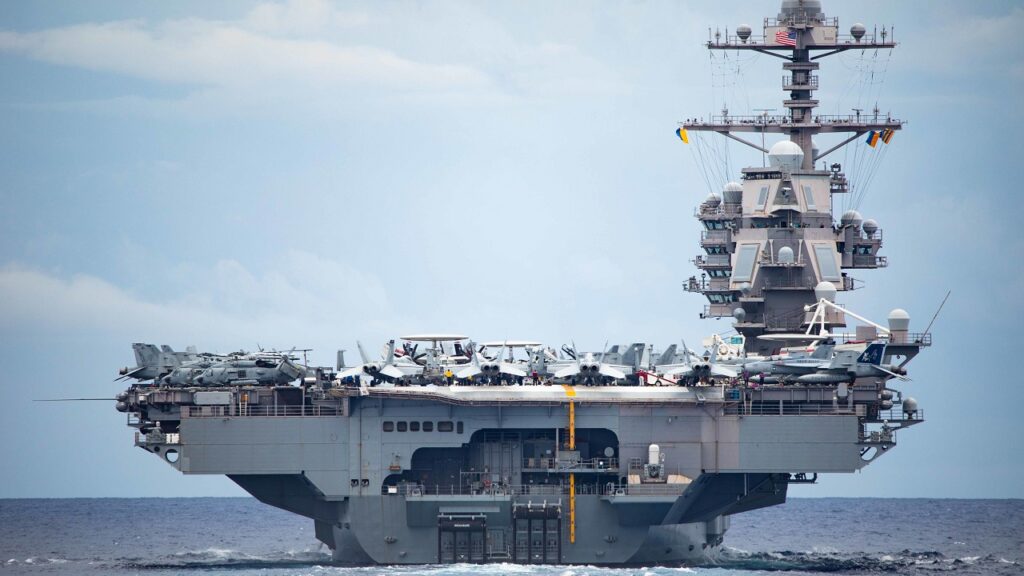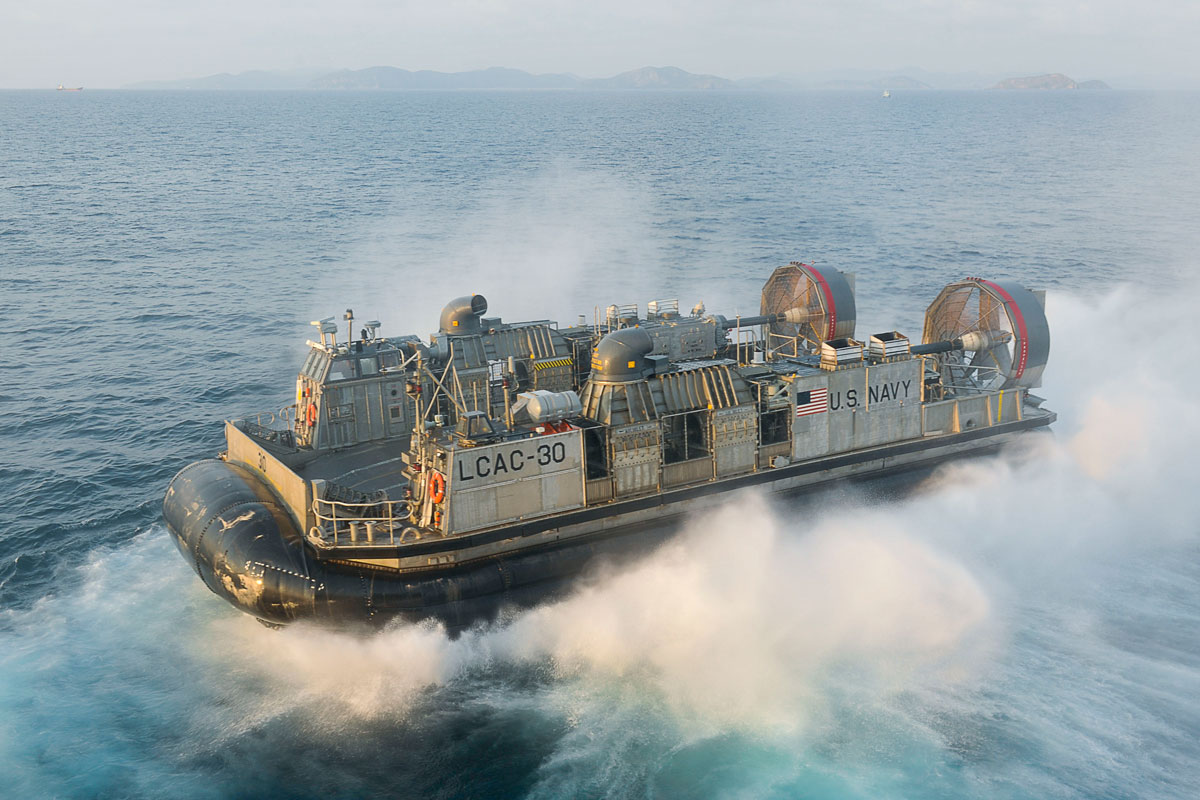
USS Gerald R. Ford (CVN-78): The Largest and Most Advanced Warship in U.S. Navy History
USS Gerald R. Ford Preparing for Maiden Deployment as Spare Parts Are Now Available: The United States Navy’s first-in-class aircraft carrier USS Gerald R. Ford (CVN-78) is the largest and most advanced warship ever built.

One challenge has been ensuring that there are enough spare parts to keep the warship operational as she prepares for her maiden deployment – and the Navy has had to cannibalize some parts from the future USS John F. Kennedy, which is currently under construction.
While the Navy has said that this won’t impact the completion of the next carrier, it certainly hasn’t been seen as an ideal situation for getting CVN-78 out to sea. Ford began her maintenance period last August following the full-ship shock trials, which resulted in some minor damage.

Parts taken from Kennedy have included “HMI screens for stores elevators as well as motor controllers, power supplies, small pumps, limit switches and valve actuators for various systems throughout the ship,” U.S. Navy spokesman Capt. Clay Doss told NavyTimes last November.
The U.S. Navy’s Program Executive Officer for Aircraft Carriers Rear Adm. Jim Downey recently told reporters that it is entirely normal for there to be a parts issue with a new first-in-class warship. There are numerous reasons; including that some systems simply don’t hold up as well as the engineering initially suggested, while other systems require a learning curve with the crew.

The Navy has been ordering additional parts from its vendors, but the service also brought in “subject matter experts” from Newport News Shipbuilding, the lead contractor that oversaw the construction of the carrier, as well as from the individual system vendors to assess the parts that were an issue.
Problems to Address
The lack of appropriate spare parts has been the latest in a series of issues that have plagued the warship as she nears her first deployment, which is now nearly four years behind schedule. However, Ford could still face further delays as it was reported this week that the combat system on the cutting-edge carrier may not be able to defend it from anti-ship missiles.

That could leave the warship vulnerable while at seas.
The sensor systems ‘satisfactorily detected, tracked and engaged the targets’ but the combat system did not engage fully, according to a Pentagon testing office report that has been seen by Bloomberg News.
The five-page document reportedly warned that the ship also suffers from ‘poor or unknown reliability’ of its launch and recovery systems – including its high-tech Electromagnetic Aircraft Launch System (EMALS) as well as its Advanced Arresting Gear (AAG). Older aircraft carriers use a steam-driven catapult for propulsion and hydraulic-engine arresting gears, and while the EMALS system was touted to be more reliable, it still apparently needs to have a few kinks worked out.
The Pentagon report found that during 8,157 takeoffs and recoveries conducted last year, the carrier’s new electromagnetic catapult system made by General Atomics demonstrated reliability of 272 launches “between operational mission failure,” or “well below” the required 4,166. Similarly, its system to snag landing aircraft demonstrated a 41-landing reliability rate, which was also “well below the requirement of 16,500.”

Improved Design
As noted in a Congressional Research Service report, “Navy Ford (CVN-78) Class Aircraft Carrier Program: Background and Issues for Congress,” updated last month, “The Gerald R. Ford (CVN-78) class carrier design is the successor to the Nimitz-class carrier design.

The Ford-class design uses the basic Nimitz-class hull form but incorporates several improvements, including features permitting the ship to generate more aircraft sorties per day, more electrical power for supporting ship systems, and features permitting the ship to be operated by several hundred fewer sailors than a Nimitz-class ship, reducing 50-year life-cycle operating and support (O&S) costs for each ship by about $4 billion compared to the Nimitz-class design, the Navy estimates. Navy plans call for procuring at least four Ford-class carriers—CVN-78, CVN-79, CVN-80, and CVN-81.”
Given the costs of these supercarriers, it is certainly hoped that the Navy can sort out the problems – and finally see USS Gerald R. Ford headed for her first deployment.




